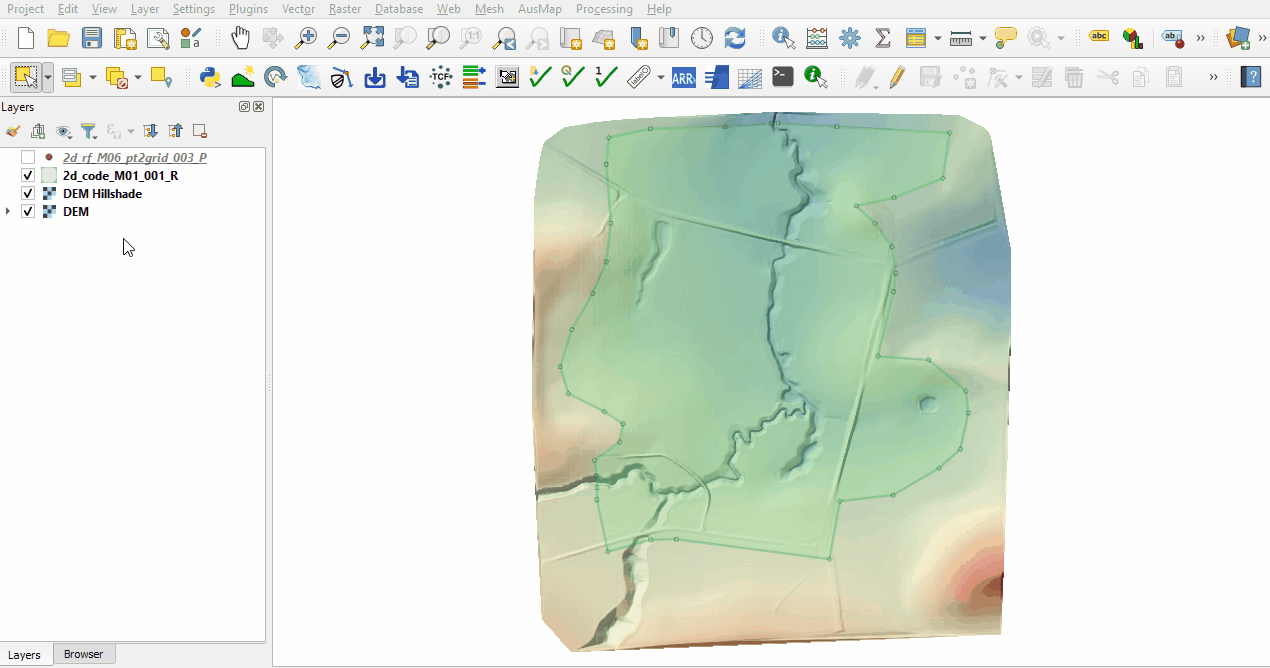Tutorial M06 003 GIS Inputs QGIS: Difference between revisions
Jump to navigation
Jump to search
Content deleted Content added
Created page with "= Introduction = QGIS is used to create, import and view input data.<br> <br> = Method = Navigate to the '''Module_06\Tutorial_Data''' folder. Copy the below GIS files into t..." |
|||
| Line 5: | Line 5: | ||
= Method = |
= Method = |
||
Navigate to the '''Module_06\Tutorial_Data''' folder. Copy the below GIS files into the '''Module_06\TUFLOW\model\gis''' folder: |
Navigate to the '''Module_06\Tutorial_Data''' folder. Copy the below GIS files into the '''Module_06\TUFLOW\model\gis''' folder: |
||
:*2d_rf_M06_pt2grid_003_P |
:*'''2d_rf_M06_pt2grid_003_P''' |
||
Investigate the supplied file: |
Investigate the supplied file: |
||
Revision as of 15:49, 14 June 2023
Introduction
QGIS is used to create, import and view input data.
Method
Navigate to the Module_06\Tutorial_Data folder. Copy the below GIS files into the Module_06\TUFLOW\model\gis folder:
- 2d_rf_M06_pt2grid_003_P
Investigate the supplied file:
- Open the file, either:
- Drag and drop the .shp file into the QGIS workspace, or
- Select Layer > Add layer > Add Vector Layer and navigate to the Module_06\TUFLOW\model\gis folder.
- The 2d_rf layer represents locations of the gauges. Inspect the attributes, the names are matching the names in the bc_dbase.

Conclusion
- The 2d_rf points layer for creating gridded rainfall was inspected.
| Up |
|---|